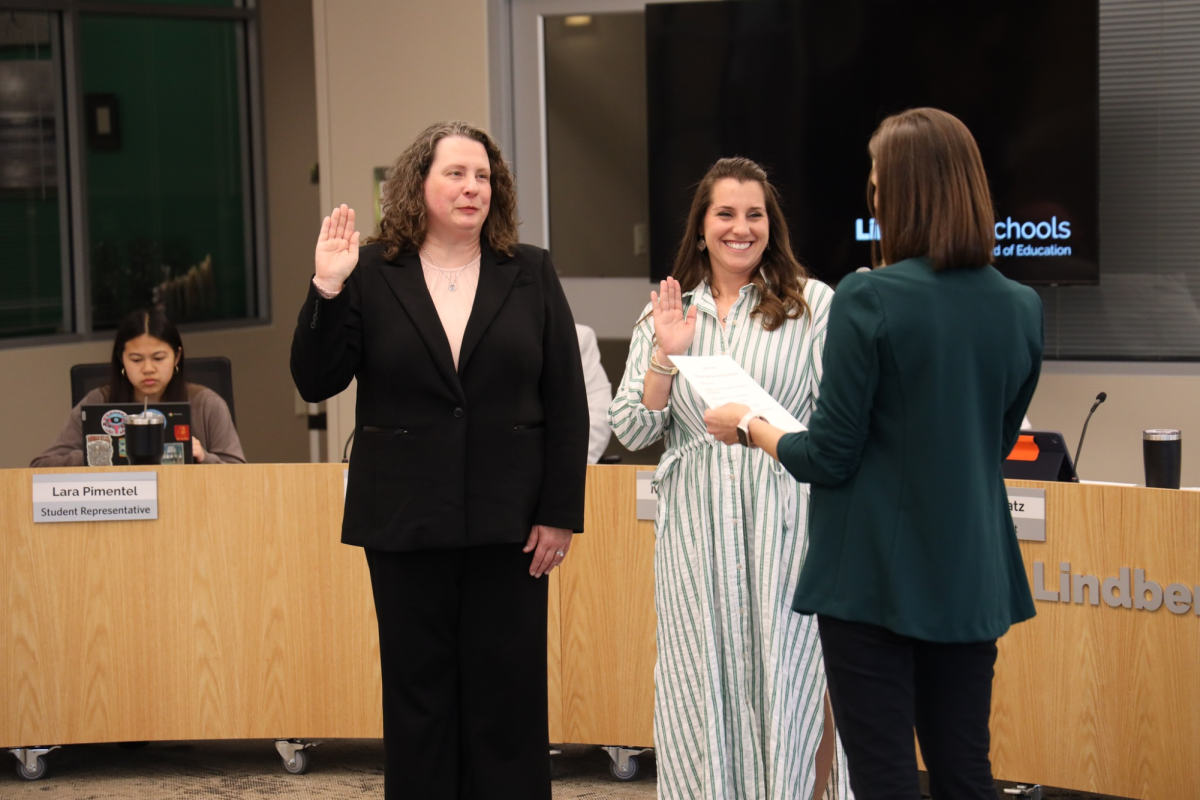Just as it regulates liquor stores and payday loan providers, the county Planning Commission is considering enacting special restrictions on tattoo parlors.
The effort is prompted by the proposed move of a successful south county tattoo and body-piercing studio, Steel and Ink Studio, from its current location in the Ritz Center strip mall across from South County Center to a larger nearby location also across from the mall, off South Lindbergh Boulevard next to the Home Depot. The move spurs questions by members of the Planning Commission as to how many tattoo parlors they want in the county and where.
“Is south county OK with just having a tattoo parlor on every corner, if you’re going to let her move right next door?” asked Planning Commission member Keith Taylor of Ballwin at the panel’s December meeting.
Tattoo parlors require conditional-use permits, or CUPs, to operate in the county.
Steel and Ink owner and tattoo artist Brandie Morton convinced the county to grant her one when she opened up in the Ritz Center in 2009. Now, she has applied for another one, with the hope of moving into her new location at the beginning of the year.
Some members of the Planning Commission, however, fear that tattoo parlors are a harbinger of an area going downhill, a fate they do not want next to a large mall.
“Once we let them in, then we have the head shops immediately move in next door selling paraphernalia,” Planning Commission Chairman Wayne Hilzinger said. “I’m not sure we want two tattoo parlors here, especially in this shopping center with Home Depot.”
Commission member Bill Sneed agreed with Hilzinger that the integrity of the area around the mall should be protected from saturation by tattoo parlors and head shops.
“We have hundreds of millions of dollars invested in the South County shopping center, which is making its way, and this thing is literally across the street,” he said. “And from the county’s perspective, I think we need to protect that investment and that tax revenue … by keeping the best we can in the area.”
The Planning Commission is worried about the possibility of multiple tattoo parlors near the mall because it issued a conditional-use permit, or CUP, for Steel and Ink at its current location, and CUPs stay with the zoned land, not with the owner, with no time limit.
If the planning panel grants a second CUP to Morton and allows her to move her studio, another tattoo parlor could open in her old location — and that’s too many tattoo parlors in one area for the commission members’ liking.
Morton agrees that the area surrounding South County Center is a nice one, and she understands the desire to keep it that way, but she feels her business contributes to the community and would like to expand it.
“I’ll just keep on tattooing. I feel blessed to be in south county,” she said. “We work here, we live here, our kids go to school here, we pay our taxes and we donate to charities.”
In her presentation to the planning panel, Morton said she began the studio with one other tattoo artist and now employs seven, including herself.
Her clientele, which includes doctors and lawyers, comes from as far away as California, and she conducts annual fundraisers for the March of Dimes and Shriners Hospital.
The Department of Planning recommended approval of the new CUP, but Sneed made a motion to hold the matter for another meeting.
The motion failed 4-3, which has the effect of a hold. Commission members Rob Forney of Kirkwood, Matthew Lampe of north county and Steve Lawler of Oakville voted against holding the issue.
The commission discussed approaching the owner of Morton’s current shopping center to try to get him to surrender his tattoo parlor CUP, but Department of Planning Director Glenn Powers noted that the owner would have little incentive to cooperate.
And since permits for tattoo parlors are so difficult to get in St. Louis County, the shopping center owner may have a hot commodity on his hands, Sneed noted.
“You will have another tattoo parlor in there as fast as you can get it,” he said.
For that reason, tattoo permits should be awarded to the owner of the studio, not the owner of the land as they currently are, he noted.
“Let’s just say she moves three more times, and now we’ve got west county, north county — all of a sudden we’ve got all these places that are sitting there ready for tattoo parlors,” Sneed said. “And I think the county has been very judicial in applying how these things operate. It should stay with the individual, not the owner.”
To prevent multiple tattoo parlors changing the character of an area, some of the suggestions offered by commission members include mandating that only one tattoo parlor can be located in each shopping center or that tattoo parlors have to be a certain distance apart.
That has precedent in the county: Check-cashing locations have to be a mile apart and 300 feet away from residences, package liquor stores have to be 1,000 feet apart and home daycare centers have to be 500 feet apart.
Even if a future ordinance restricts tattoo parlors, however, Morton’s business could be grandfathered in as an exception.
Since Morton hoped to move into her new location as early as Jan. 1, she had already spent $5,000 remodeling the new location before she learned that the move could be unlikely.
In hindsight, she feels lucky to have been granted her original CUP in 2009, when she spent more than $25,000 in legal fees to get Steel and Ink through the county approval process.





















